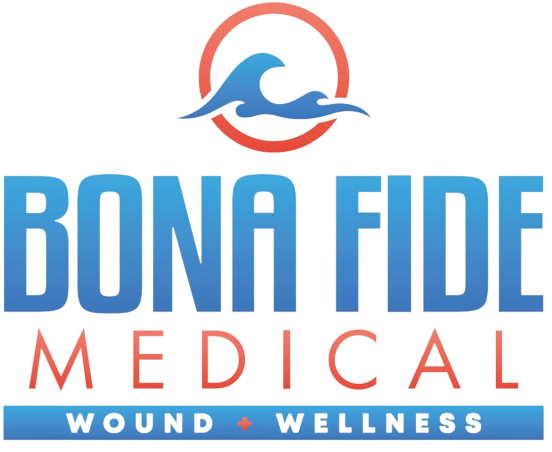Ozonotherapy (Ozone Therapy) is a holistic approach that is believed to offer a range of potential health benefits. Ozone Therapy uses medical grade ozone, a highly reactive form of pure oxygen, to create a curative response in the body. The body has the potential to renew and regenerate itself. When the body becomes sick, it is because this potential has been blocked. The reactive properties of ozone stimulate the body to unblock and balance the processes of oxygen utilization and heal itself. Scientific studies have demonstrated its healing effects on interstitial cystitis, chronic hepatitis, herpes infections, dental infections, and diabetic complications.
Ozone Therapy
Some of the benefits often associated with Ozone Therapy include:
Enhanced Oxygen Utilization: Increases blood circulation and the body's ability to use oxygen in ischemic tissue (1)
Immune System Support: Activates the immune system, making it more effective in fighting infections and illnesses (2)
Wound Healing: Facilitates healing in skin wounds and ulcers by improving blood flow and tissue oxygenation, and increasing growth factors resulting in accelerated tissue regeneration (3, 4)
Anti-Inflammatory, Antibacterial, and Antiviral Effects: Natural properties of ozone can help reduce inflammation, treat infections, and reduce cold or viral symptoms. (5)
Gastrointestinal Health: Ozone therapy, particularly rectal insufflation, may support gastrointestinal health, restore gut microbiota, and help manage digestive disorders. (6)
Pain Management: Ozone therapy has been used for pain relief for conditions like arthritis and musculoskeletal pain, and has reduced or even eliminated many cases of chronic pain through its action on pain receptors.
Nasal Insufflation
Ozone nasal insufflation is a therapeutic method that introduces ozone gas into the nasal passages. This procedure is designed to address a range of respiratory issues, including sinusitis, allergies, and congestion. Ozone's anti-inflammatory and antimicrobial properties can assist in reducing nasal inflammation, improving airflow, and boosting overall respiratory wellness.
Nasal Insufflation may help treat the following:
- Sinusitis
- Allergies
- Nasal congestion
- Rhinitis
- Chronic sinus infections
- Postnasal drip
Ear Insufflation
Ozone ear insufflation is a non-invasive and gentle therapy that involves introducing ozone gas into the ear canal. This therapy is known for its potential to alleviate various ear-related issues, such as infections, tinnitus, and hearing problems. Ozone's natural antibacterial properties can help combat infections and promote ear health, making it a safe and effective option for those seeking relief from ear discomfort.
Ear Insufflation may help treat the following:
- Ear infections
- Tinnitus
- Swimmer's ear
- Hearing loss
- Otitis media
- Ear pain, discomfort, temporomandibular joint disorders (TMJ)
Rectal Insufflation
Rectal insufflation, also known as rectal ozone therapy, is a method where ozone gas is administered into the rectum. This therapy is often used to enhance general health and wellbeing. It is believed to stimulate the body's natural healing processes and detoxification, potentially benefiting individuals dealing with conditions like digestive disorders, immune system support, and chronic illnesses. Ozone therapy via rectal insufflation is a discreet and minimally invasive way to harness the healing properties of ozone.
Rectal Insufflation may help treat the following:
- Inflammatory bowel disease (IBD)
- Crohn's disease
- Ulcerative colitis
- Constipation
- Autoimmune disorders
- General immune system support
References
Bocci, V., Zanardi, I., Huijberts, M. S., & Travagli, V. (2011). Diabetes and chronic oxidative stress. A perspective based on the possible usefulness of ozone therapy. Diabetes & metabolic syndrome, 5(1), 45–49. Retrieved from https://doi.org/10.1016/j.dsx.2010.05.014
Fry, R.C., Rager, J.E., Zhou, H. et al. (2012). Individuals with increased inflammatory response to ozone demonstrate muted signaling of immune cell trafficking pathways. Respir Res, 13, 89. https://doi.org/10.1186/1465-9921-13-89. Retrieved from https://respiratory-research.biomedcentral.com/articles/10.1186/1465-9921-13-89
Fitzpatrick, E., Holland, O., Vanderlelie, J. (2018). Ozone therapy for the treatment of chronic wounds: A systematic review. International Wound Journal, (15)4: 633-644. Retrieved from https://www.ncbi.nlm.nih.gov/pmc/articles/PMC7949634/
Kim, H. S., Noh, S. U., Han, Y. W., Kim, K. M., Kang, H., Kim, H. O., & Park, Y. M. (2009). Therapeutic effects of topical application of ozone on acute cutaneous wound healing. Journal of Korean medical science, 24(3), 368–374. https://doi.org/10.3346/jkms.2009.24.3.368. Retrieved from https://www.ncbi.nlm.nih.gov/pmc/articles/PMC2698179/
Vaillant, J. D., Fraga, A., Díaz, M. T., Mallok, A., Viebahn-Hänsler, R., Fahmy, Z., Barberá, A., Delgado, L., Menéndez, S., Fernández, O. S. (2013). Ozone oxidative postconditioning ameliorates joint damage and decreases pro-inflammatory cytokine levels and oxidative stress in PG/PS-induced arthritis in rats. European Journal of Pharmacology, 714 (1–3), 318-324. https://doi.org/10.1016/j.ejphar.2013.07.034. Retrieved from https://www.sciencedirect.com/science/article/pii/S0014299913005566
Mallaeva, R. M. (2018). The effect of ozone therapy on the state of intestinal microbiota. Modern Issues of Biomedicine, T2(1), 108-114. Retrieved from https://svbskfmba.ru/arkhiv-nomerov/2018-1/mallaeva
Questions?
If you have any questions or would like to learn more, call us at (361) 248-2663 or send us a message!


